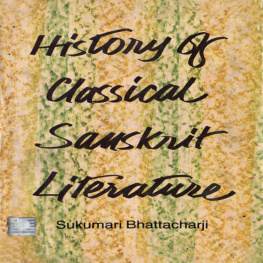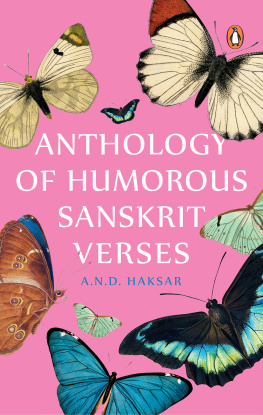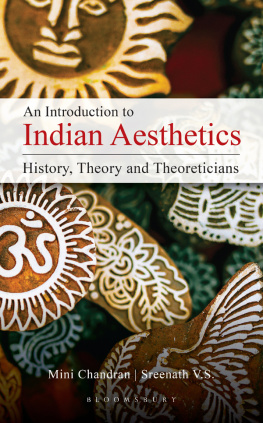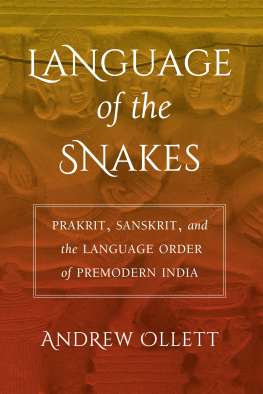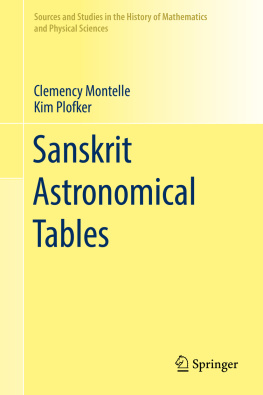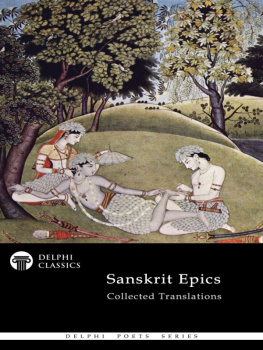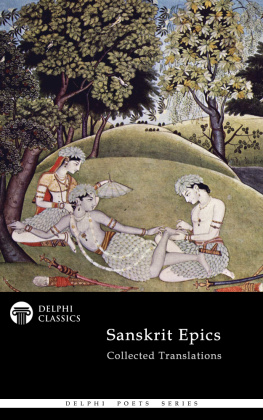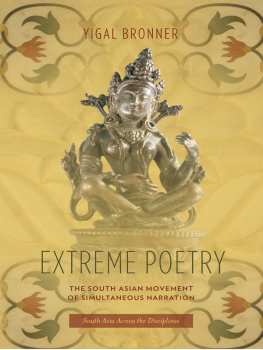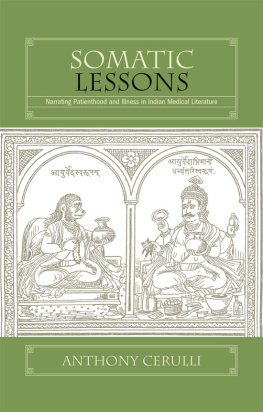History of Classical Sanskrit Literature
For our entire range of books please use search strings "Orient BlackSwan", "Universities Press India" and "Permanent Black" in store.
Sukumari Bhattacharji
History of Classical
Sanskrit Literature
Orient Blackswan Private Limited
Registered Office
3-6-752 Himayatnagar, Hyderabad 500 029 (A.P.), INDIA
e-mail:
Other Offices
Bangalore, Bhopal, Bhubaneshwar, Chennai,
Ernakulam, Guwahati, Hyderabad, Jaipur, Kolkata,
Lucknow, Mumbai, New Delhi, Noida, Patna
Orient Blackswan Pvt. Ltd. 1993
eISBN 978-81-250-5923-3
e-edition:First Published 2015
ePUB Conversion: .
All rights reserved. No part of this publication may be reproduced, distributed, or transmitted in any form or by any means, including photocopying, recording, or other electronic or mechanical methods, without the prior written permission of the publisher, except in the case of brief quotations embodied in critical reviews and certain other noncommercial uses permitted by copyright law. For permission requests write to the publisher.
Contents
- The Early Germination
Third Century BC to Second Century AD - TheFirst Blossoms
Third to Fifth Century AD - TheFull Flowering
Sixth to Seventh Century AD - TheFrost-bitten Buds
Eighth to Twelfth Century - TheWilting Blossoms
Thirteenth to Sixteenth Century
Preface
The idea of writing a history of Classical Sanskrit Literature came in the course of teaching the subject to post-graduate students at Jadavpur University for a number of years. One of my ex-pupils, Dr. Sruti Ray, urged me to write this book, especially as both Keith's and S.K. De's extremely well-written books have dated to some extent, and as A.K. Warder's excellent five-volume work is rather too bulky as a textbook for the post-graduate students' requirement. My own excuse for writing this book is first, that I found that students do not normally connect literature with its historical background, nor are they aware of the influence of an age on its literary products; studied in isolation, literature is not placed in its proper perspective. Hence, I decided to introduce each age by giving a short historical and cultural background, and then discuss the genres chronologically within the chapter as far as feasible, instead of discussing them only as genres in isolation, so that readers can trace the traits common to these periods. The periodization, however, is entirely mine.
The first chapter, which covers third century BC to second century AD, is the formative one; it sets norms for poetry and drama for the succeeding periods. The next chapter, on third century AD to fifth century AD, sees the flowering forth of these two genres in the works of many authors, both of which, however, reached their zenith in Klidsa's works. The third chapter, covering the sixth and seventh centuries discusses other literary forms, introduces ornate prose and discusses the continuity of the tradition from the earlier period. Ornate prose romances begin and end during this period, reaching their peak in Ba's romances. The fourth chapter, covering the eighth to twelfth centuries, describes the continuation of prose, poetry and drama, along with a few minor literary sub-types which came into vogue during this period. It definitely marks the beginning of the decline of Sanskrit literature after it reached a lofty pinnacle for the last time in Bhavabhti. The bankruptcy of creativity is apparent. The fifth chapter, thirteenth to sixteenth centuries, occupies itself with the last phase of the decline; what follows is, for the most part, mere repetition, plagiarism and rehash of older themes in new forms.
The three words in the title, 'classical', 'Sanskrit' and 'literature' denote the limits of this book : it deals only with the 'classical' period proper, and only with 'Sanskrit' works. Hence many Prkrit works are omitted, or, if they are very famous, have only been summarily treated in footnotes, and only with 'literature' i.e., works which are or aspire to be literature. Poetics, grammar, philosophy, the sciences and the other arts are either omitted, or, when relevant, dealt with in the sectional introductions.
As the chapter introductions give brief accounts of the material and cultural background of each period, it remained for the general introduction to give a broad perspective of this vast and varied literature spread over nearly two millennia. Here, the origin and history of each of the major genres qua genres are given, broadly in a chronological order.
The University Grants Commission gave financial support for the preparation of the book, primarily as a post-graduate level textbook. But it also addresses itself to all who are interested in classical literature.
It is now my pleasant duty to acknowledge debts of gratitude to those who assisted me in the preparation of this work. Sri Dibakar Karmoker, despite his many difficulties, typed the entire manuscript within a very short time, thus enabling me to keep to my time schedule. I am indebted to Prof. B.N. Mukherji for the discussions I had with him and the books he lent to me. I deeply appreciate my ex-pupil Dr. Tapodhir Bhattacharya's very kind offices in assisting me in revising the entire manuscript. In this he was helped chiefly by Pratik Kanjilal who painstakingly checked the manuscript with the typescript. RajesriGoswami, Anirbanjyoti Chowdhury, Raka Bandyopadhya and Sandip Das assisted Pratik; I thank all of them. Sushama Bhaduri very kindly prepared the bibliography for this book. My ex-pupil Dr. Nilanjana Datta ignored her many difficulties and helped me with the preparation of the manuscript. To her and to all who helped and encouraged me, I feel deeply grateful.
There are bound to be some errors, for which I alone am responsible. My only hope is that the book may be of some help to students and also to others who are interested in Sanskrit literature and in literature in general.
Sukumari Bhattacharji
Introduction
Shakespearean fish swam the sea far away from land,
Romantic fish swam in nets coming to the hand,
What are all those fish that lie gasping on the sand?
W.B. Yeats: Three Movements
The transition from Vedic to classical Sanskrit literature was a slow, steady and gradual process. The inclusion of many narratives in the Brhmaas and the Upaniadsnarratives which are rather tenuously connected with sacrifices or philosophical discourseswas perhaps the incipient stage of this process. Early Buddhist literature in Pli, began within a couple of centuries after the latest Brhmaas, and in the early centuries AD we have literature in Buddhist hybrid Sanskrit, which used myths, legends and anecdotes for illustrating religious and philosophical themes. Buddhist literature in Pli and hybrid Sanskrit was coterminous with the two primary epics, the Rmyaa and the Mahbhrata, both of which drew upon the floating popular repertoire of myths and legends that were also the sources of the illustrative narratives in Buddhist literature.
When Sanskrit literature moved from the Vedic to the classical, it changed not only its form but also its objective; it chose to address itself to the mundane interests of the people, that is, it ceased to be primarily religious. Its aim also changed, for it no longer edified overtly, but sought primarily to entertain. If it did edify, it did so indirectly. Already in the Vedga literature of the later Vedic period, the direct and vital link with the sacrifices had snapped, for by then all the six Vedga subjects were being e cultivated independently, as the stras themselves testify. The late Dharmastras quite openly include pjs of images in temples with non-Vedic rites. Thus even the notional connection with sacrificial religion had been abandoned.
Next page
